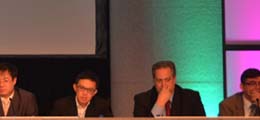
Dr. Gregor Krings
Pediatric Cardiologist
Director of The Children‘s Heart Center
University Medical Center Utrecht
Lundlaan 6, 3584 EA Utrecht, The Netherlands
Gregor Krings, MD
Dr. Gregor Krings received his accreditation in 1996 from the Humboldt University in Berlin. He finished his thesis in 2006 on an adjustable pulmonary artery banding developed in an animal experiment. He underwent his training in Pediatrics and Pediatric Cardiology from 1996-2005 at the Charity University Hospital Berlin and The German Heart Center Berlin. From 1998 to 2000 he joined the electrophysiological cathlab at the St. Georg Hospital in Hamburg. He directed the Cardiac Catheterization Laboratory at the Charité Berlin from 2003-2009. In 2009 he moved to the University Medical Center Utrecht, The Netherlands.
In 2011 he became head of the cathlab and since 2017 director of the Children’s Heart Center. Dr. Krings is specialized in interventional congenital cardiology. With the installation of a 3D rotational catheterization laboratory in 2011 he focused on the challenges, limitations and options of a 3DRA system to guide complex interventional procedures. Together with his team he published several papers on workflow related aspects of 3DRA, reduction of radiation and strategies to prevent airway compression during pulmonary artery stenting. He initiated an international conference on the use of 3D rotational angiography in 2013 with international colleagues to discuss and further develop the multimodality use of 3D imaging during heart catheterization.
Together with Dr Aimee Armstrong he organized the 3DI3 conference at Nationwide Children’s in 2016 and 2019. Both decided to combine their efforts and ambitions with the PICS organizers with 3DI3 now being formally affiliated with PICS-AICS. Dr Krings’ research interests focus on the development of 4D rotational angiography, application of Computational Fluid Dynamics in congenital heart disease, development of intravascular devices for pulmonary valve implantations and the investigation of right ventricular adaptation mechanisms in an experimental animal setting.


